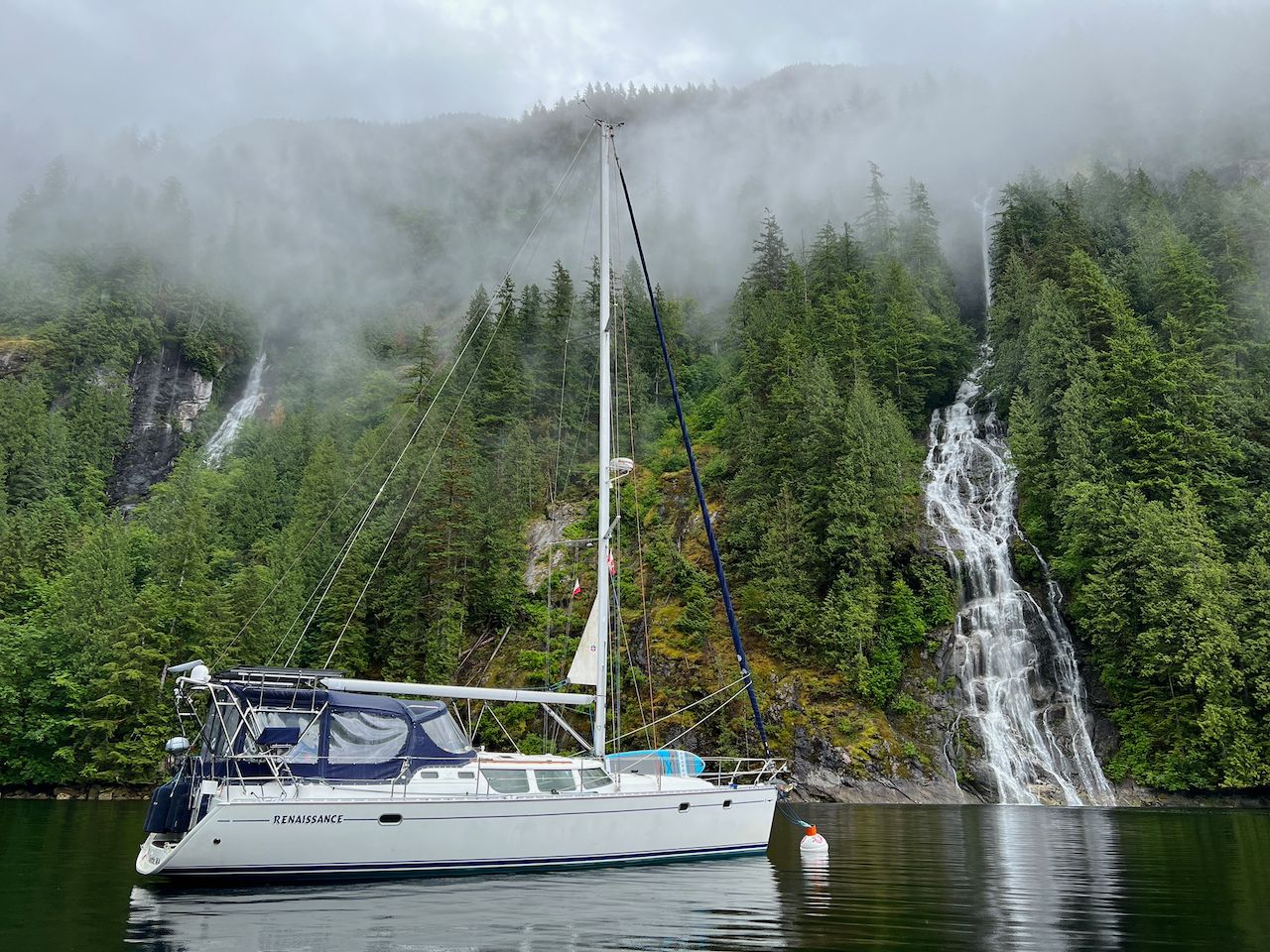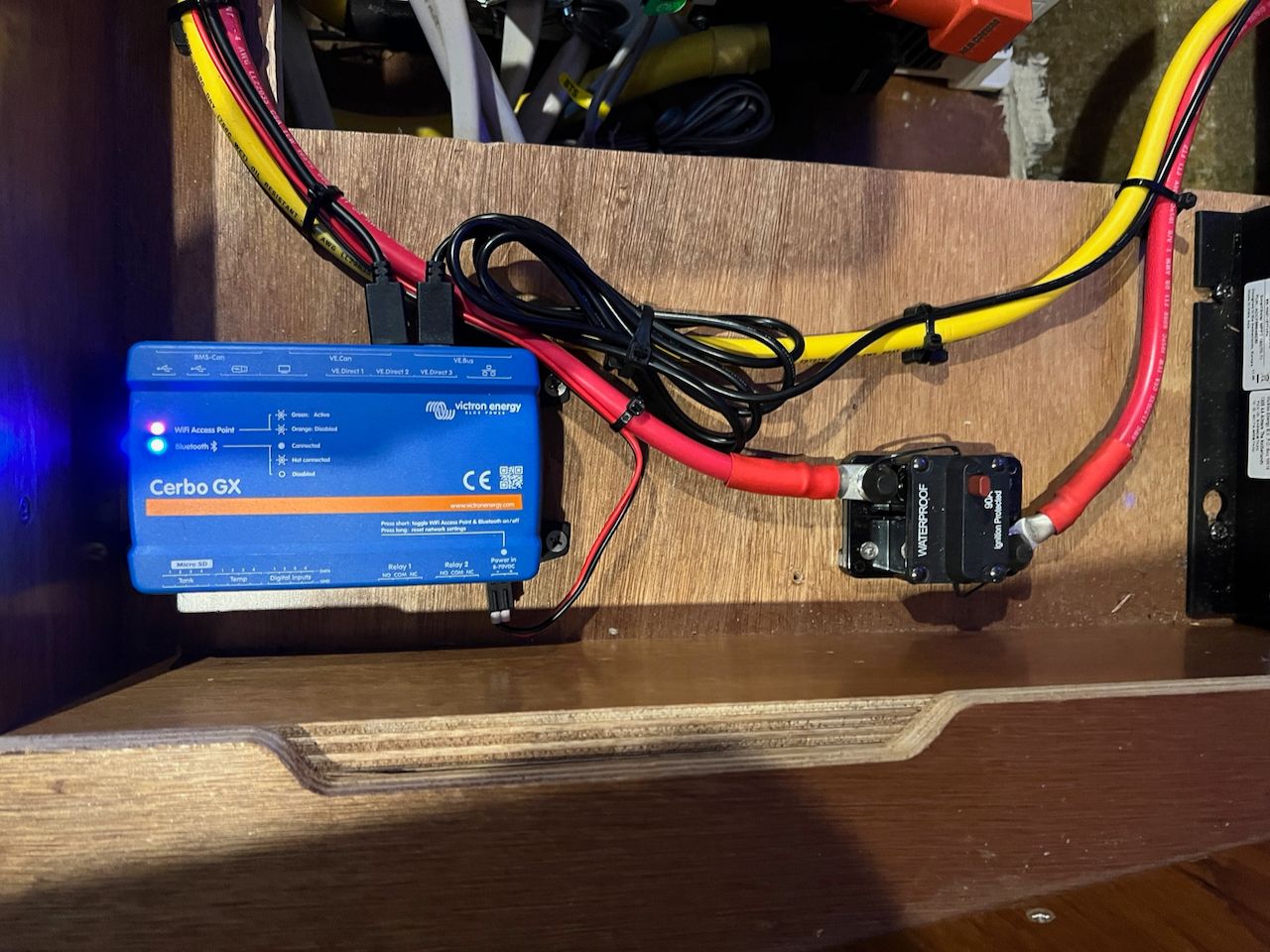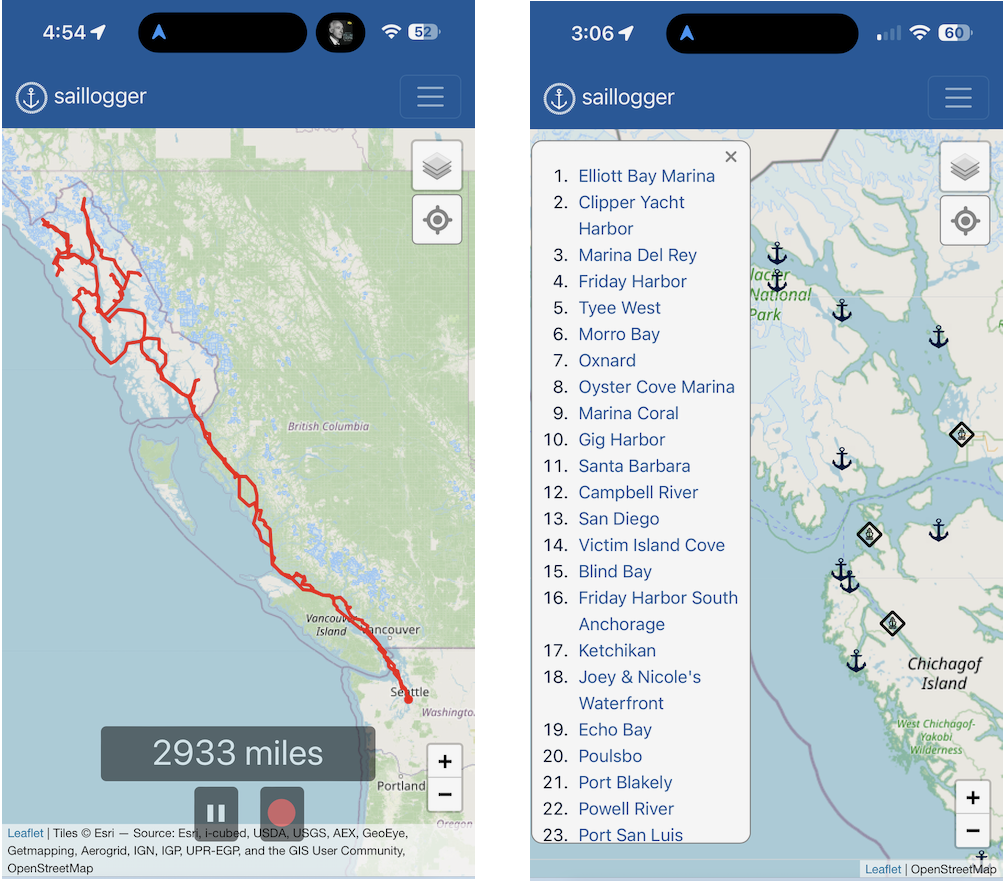Ubiquitous Internet access is changing boating and cruising, much like it has revolutionized the world before. As Steve Jobs famously remarked in the early days of the Internet, 'We're just in the beginning stages of what will be a truly remarkable breakthrough for most people – as remarkable as the telephone.' Similarly, the advent of widely available Internet access on boats is likely to be even more remarkable and impactful than we currently recognize.
Already, we are witnessing the initial stages of this transformation. The Internet itself is revolutionary, but its integration with a local computing platform opens up a world of additional creative possibilities for boat owners.
In this article, we discuss the integration of two popular systems, Starlink and Victron, which are already available on many boats, to create a powerful connected boat capable of live tracking, monitoring, and automatically capturing your memories and adventures.
Navigating New Waters: Starlink Revolutionizes Boating Connectivity
Internet on boats is not new or particularly novel, we have had connectivity on our boat since 2018 through cellular modems. LTE was mostly the name of the game back then. We even developed a dedicated website called boatersatlas.com to capture signal strengths in different spots. LTE access is good but certainly not ubiquitous, as you need to be mindful of coverage areas, data caps, etc. And you can forget it when you go 20 miles off the coast.

Starlink has been a game-changer in this regard. Relying on connectivity for practically everything we do, we embraced Starlink early on, making us some kind of pioneers in a new era of connectivity for boaters. It came to a point where we ended up with not only one but two Starlinks. I wrote about it in detail before, so will not repeat it here.
During our circumnavigation of Vancouver Island in 2022, renowned for its lack of cell phone reception along the west coast, our Starlink(s) stood out as the sole provider of Internet access to neighboring cruisers. In remote anchorages, we routinely extend a free hotspot to fellow boaters. Each morning, a funny routine unfolded as dinghies would gather around our boat, their occupants sipping their morning coffee while downloading weather reports and news. It earned us the affectionate moniker, 'Cafe Renaissance' – a testament to us having the best coffee in town (we love our espressos!), complemented by blazing-fast Internet and, of course, the breathtaking views (credit for which goes to gorgeous British Columbia).
Fast forward to today, in less than 2 years, nearly half of all boats in our marina now display Starlink antennas on their arches and many of the boats we run into at anchorages usually have a Starlink of their own. Friends we made in a remote anchorage off Vancouver Island who were very much impressed by our Starlink back then are currently on a multi-week ocean passage to French Polynesia, staying seamlessly connected with their own Starlink. They're communicating with friends and family, receiving up-to-date weather information, and capturing their journey's memories and tracks along the way.
Things progressed fast. When we visited Alaska last year, a mere year after our Vancouver Island adventure, almost no-one needed our hotspot anymore as everyone had their own Starlinks. While we still did and do get warm thanks for our open hotspot, fewer boaters use it at this point.
Whether we like it or not (and there are valid reasons not to), boating has already undergone significant change and more seems on the way. The accessibility of connectivity underway and in remote anchorages has revolutionized the possibilities for communications and remote work, enabling individuals to embark on multi-year boating journeys without retiring or leaving their jobs.
Moreover, with technologies like Starlink, even deep ocean voyages now offer the potential for continuous Internet access, thus significantly expanding the horizons for technological disruption and innovation.
Today, Internet usage aboard boats mirrors that on land—staying connected, easily accessing weather reports, engaging in social media, streaming and more. While this trend is unsurprising, we can expect the future to hold a more integrated and connected boating experience, potentially culminating in the emergence of the Internet of Boats (IoB).
Consider the myriad of boating technologies reliant on communication: EPIRBs, PLBs, trackers, weather forecasting systems, AIS, and VHF radios. If history has shown us anything, it is that the Internet excels at disrupting existing technologies, particularly when it comes to communication. It's easy to envision a future where these technologies are augmented (or in a more futuristic world, even replaced) by Internet-based solutions. In fact, we're already witnessing glimpses of this future. When the sailboat Raindancer tragically sank in the Pacific Ocean after colliding with a whale, it was a Starlink-coordinated rescue that ultimately saved them (they didn't have Starlink themselves). Pondering this, who wouldn’t want a long-distance targeted VHF in emergencies, allowing for hailing boaters within a 50-mile radius?
Once set up, using Starlink requires no special expertise. Whatever you do at home on the Internet, you can do on your boat, and that's primarily how it's utilized today. However, it doesn't take much imagination to foresee an increase in specialized boating solutions capitalizing on continuous Internet connectivity.
In fact, we're the creators of one of those solutions. When we developed Saillogger back in 2019 to track our own adventures, we didn't anticipate its popularity among boaters. Today, hundreds of boaters worldwide use Saillogger, with a significant portion utilizing it via Starlink, to track their journeys across the world's oceans. We'll talk more about Saillogger later.
Having Internet access wherever you are is already quite revolutionary. A smartphone loaded with apps can serve most needs. However, for boating, there's one significant gap: accessing data from your boat itself. Boats are sophisticated systems, offering a wealth of data: highly accurate GPS, readings from wind and depth instruments (often including water temperature), engine and battery information, solar data, and environmental metrics like atmospheric pressure, cabin temperatures, and humidity. Additionally, AIS data provides information about neighboring boats. While there may be more data available, GPS, AIS, wind, depth, and water temperature are almost always present on boats equipped with modern electronics and an NMEA 2000 network.
Access to boat data isn't necessary for having Internet access, but combining the two enriches your boating experience by making your boat truly intelligent!
Bridging the Gap: Transforming Boat Electronics
While Starlink can solve your Internet access problem wherever you may be, what about the data that sits in the boat network? No doubt, every device on the boat these days claims to be connected, from your chart plotter to your VHF and AIS. However, an unfortunate reality persists within the realm of boat electronics: they often feel like relics from a bygone era—bulky, unwieldy, and burdened with poor user interfaces. Despite the marketing claim of being 'built for marine usage', suggesting resilience in harsh conditions in a fancy way, the reality often yields expensive, user-unfriendly equipment with limited features, severely restricted capabilities, and minimal extensibility. The stark contrast between using a chart plotter and even a modest tablet side-by-side easily underscores this point.
So, what can serve as the versatile bridge between the Internet and your boat? Historically, many tech enthusiasts, myself included, have addressed this challenge by deploying a dedicated, specialized boat computer onboard. These solutions usually entail Raspberry Pis or Intel NUCs, yet this approach inherently limits the audience to a niche group of technically advanced users (shall we just say geeks?!).
Powering Connectivity: Victron's Local Computing Platform
This is where Victron Energy comes into play. Specializing in power electronics, Victron's solutions are not directly focused on marine applications but are increasingly prevalent on a wide range of boats, particularly among higher-end ones (which also happen to feature Starlink).
Victron has adopted an open mindset in designing their systems, which, in my opinion, makes them ideal companions for a smart boat. Specifically, the Victron GX series offers easy integration with an NMEA 2000 network and provides extensibility to bridge your boat and the Internet, serving as a comprehensive local computing platform.
With a few additional simple steps, a Victron GX device can indeed serve as your onboard computer, operational 24/7, with continuous Internet access through Starlink wherever your boat may be, even in the high seas! This combination offers significant power and versatility.

I have previously covered Victron GX devices extensively and detailed ways to transform them into powerhouses for your boat. To avoid repetition, I won't go into all the details here again. Instead, I'll focus on a specific use-case: providing real-time status updates and tracking links for your friends and family, and automatically organizing your trips into detailed logbook entries.
Unleashing Connectivity: Real-Time Tracking for the Modern Explorer
Real-time tracking has long been a crucial aspect of boating safety and a means to share one's adventures with loved ones and put their minds at ease: Where is your boat? Where are you heading? What are the weather and sea conditions around you? Did you just catch a fish worth sharing with your followers? How are you feeling?
Indeed, solutions for trackers have existed, but they've remained highly specialized, relying on dedicated hardware and connections to cell towers or satellites. Despite claims of being 'built for outdoor or marine usage' their user interfaces are often lackluster, providing limited functionality beyond basic position tracking and note sharing. Returning to our earlier point, the true intelligence of your boat remains largely untapped, residing in a separate realm with no meaningful interconnection between the two.
But with ubiquitous Internet connectivity provided by Starlink, available wherever you are in the world, coupled with a robust local computing platform that is already there to manage your power systems, why do you even need a separate device to track your adventures? In reality, you don't.
Simply download an app on your Victron GX device, and it transforms into your live tracker and much more. As anyone familiar with mobile apps on phones can attest, there are already numerous solutions available. However, we'll talk about a specific one: Saillogger, a project we initiated back in 2019 (for a different solution, also have a look at noforeignland). This was well before the emergence of Starlink or the Victron GX series.
We initially created Saillogger for our own use—a personal endeavor to craft the ultimate smart boating companion. Its purpose: to seamlessly capture and log our memories and adventures, ensuring every precious moment is remembered. In more than 5 years since its inception, Saillogger automatically logged more than 8,000 miles for us along the California coast, Puget Sound, Salish Sea and Alaska with astonishing accuracy and precision, with no effort from us.
Over the years, Saillogger has attracted many more users beyond us, and with the addition of numerous features, it has evolved into perhaps the most sophisticated boat tracking solution available today.

Saillogger not only provides a live tracker but also automatically organizes your trips into detailed logbook entries and specifics around your anchorages and time spent in those.

Saillogger predates Starlink and Victron GX and works on a variety of different platforms. But ubiquitous Internet access by Starlink and extensible platform by Victron made it much more accessible to many more boaters. This has made Saillogger an easy and ideal solution for boats that are already equipped with Starlink and Victron. In fact, many of Saillogger users use it on a Victron device powered by Starlink.
You can see our own live tracker at https://saillogger.com/svrenaissance and view our automatically calculated statistics. You can also test the features yourself using a demo account. If you already have Starlink and Victron, you can get started easily in a couple of minutes to create your automated logging and tracking solution. Just create an account and follow the step-by-step instructions.
While we created Saillogger, it is simply one example that demonstrates how powerful it can be to combine ubiquitous Internet access with a local computing platform that is already integrated with your boat electronics. We are on the verge of a wave of technological advances. Many more solutions are being built, and no doubt, more will come.
Check out Saillogger and countless other apps that are already available to download and use on your Victron. Many of these apps do not require an Internet connection, but the Internet certainly enhances their capabilities. You can find the details on how to download these apps to your Victron in our previous article.
Smooth sailing on your connected adventures! 🌊⛵
